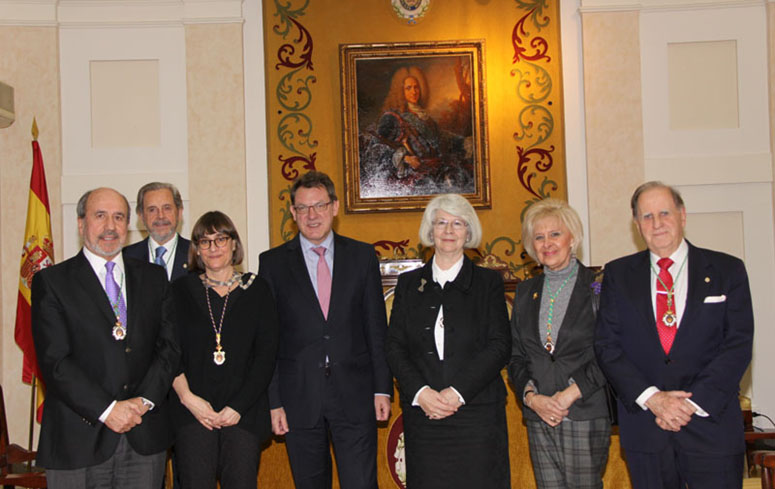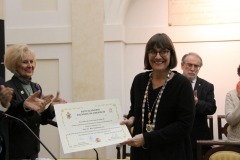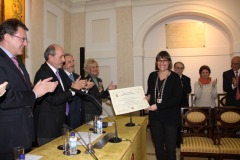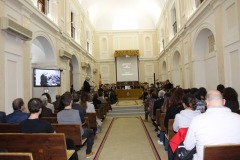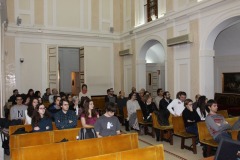Research areas
Our research aims to elucidate the key mechanisms of neurogenesis in the developing and adult brain. In contrast to organs such as the skin, the small intestine or the hematopoietic system, most cells in the adult mammalian nervous system are permanently postmitotic, such as the neurons and the oligodendrocytes, and are not turned over nor regenerated once they die. Neurogenesis persists only in very few regions of the adult mammalian forebrain, and neurons degenerated after acute or chronic injury are not replaced in the adult mammalian brain. To overcome this, we study neurogenesis when and where it works with the aim to reactivate these mechanisms and re-instruct neurogenesis after brain injury.
This approach has been inspired by our discovery that glial cells are the source of neurons in the developing brain. The ubiquitous glial cells in the developing brain are radial glia that generate the majority of neurons and glia during brain development (Malatesta et al., 2000; 2003; for review see: Götz et al., 2015; Götz in Neuroglia, ed. Kettenmann and Ransom; Borell and Götz, 2014; Taverna et al., 2014; Malatesta and Götz, 2013; Götz and Huttner, 2005). However, when neurogenesis ceases, radial glial cells also disappear in the mammalian brain and give rise to ependymal cells lining the brain ventricle. However, in a few regions of the rodent brain radial glial cells persist into adulthood and function as adult neural stem cells at the source of ongoing neurogenesis. Indeed, neurogenesis also consists in these regions in the adult human brain. We therefore examine the mechanisms of neurogenesis in these restricted regions in the adult forebrain, and compare these mechanisms to those operating during development (for review see: Götz et al., 2015; Ninkovic and Götz, 2013). Moreover, neurogenesis also persists in a more widespread manner in the adult zebrafish brain, where radial glial cells persist into adulthood (Adolf et al., 2006; Chapouton et al., 2008). We therefore use zebrafish as a model system to examine widespread neurogenesis in the adult brain (Barbosa et al., 2015) and to compare neurogenesis after brain injury in zebrafish and mice (Baumgart et al., 2012).
Our key questions are:
What are the intrinsic determinants of neurogenesis and how can they be re-activated again in the adult brain to reconstitue neurons in adult brains?
What are the intrinsic and extrinsic differences between radial glial cells endowed with stem cell properties and the majority of ependymal cells and astroglial cells, the closest relatives of radial glia, in the remainder of the brain?
Why do most astrocytes in the adult mammalian brain fail to generate neurons after injury in vivo?
What are the key mechanisms specifying neuronal subtypes?
We tackle these questions at three levels:
1) During development, the time when most neurons are generated we:
Examine the neurogenic role of radial glial cells (see Stahl et al., 2013; Pilz et al., 2013; Cappello et al., 2013; Johansson et al., 2013; Walcher et al., 2013; Haubst et al. 2006, Cappello et al., 2006; Malatesta et al. 2000, 2003)
Search for differential expression of FACSorted precursors followed by functional analysis (Pinto et al. 2008, 2009)
Analyse the mode of cell division and its consequences for progenitor generation and neural stem cell self renewal (see Cappello et al. 2006, Costa et al. 2008)
Regionalisation and patterning of the embryonic and adult brain (Pilz et al., 2013; Walcher et al., 2013; Brill et al., 2008, 2009; Haubst et al., 2006, Frowein et al. 2006)
2) At early postnatal stages when neurogenesis comes to an end and gliogenesis peaks in the mammalian forebrain:
Screening and functional analysis of molecular factors mediating the end of neurogenesis (Stahl et al., 2013; Johannsson et al., 2013; Pinto et al. 2008)
Comparison to other vertebrates that have ongoing neurogenesis into adulthood (Barbosa et al., 2015; Baumgart et al., 2012)
Redirect postnatal glia towards neurogenesis (Masserdotti et al., 2015; Heinrich et al., 2010; Berninger et al., 2007; Heins et al., 2002)
3) In the adult brain, where neurogenesis is restricted to few specific regions, such as the subependymal zone of the lateral ventricle and the dentate gyrus of the hippocampus, we
Examine the molecular factors and the mechanisms that mediate adult neurogenesis in restricted regions (Ninkovic et al., 2013, Beckervordersandforth et al., 2014, 2010; Colak et al. 2008, Brill et al. 2008, 2009)
Aim to reinitiate these mechanisms promoting neurogenesis in non-neurogenic regions of the injured forebrain (Heinrich et al., 2014; Sirko et al., 2013; Kronenberg et al., 2010; Buffo et al. 2008, 2005)
Study the lineage and fate determinants of glial progenitors outside the neurogenic niches (for review see: Dimou and Götz, 2014; Robel et al., 2011;
for original work see: Bardehle et al., 2013; Sirko et al., 2013; Buffo et al., 2008, Dimou et al., 2008)
Search for molecular factors inhibiting neurogenesis outside the neurogenic niches (Sirko et al., 2015, 2013; Beckervordersandforth et al., 2010; Buffo et al. 2005, Colak et al. 2008)
Create tools to target specifically adult neural stem cells and glial cells in the injured brain (Beckervordersandforth et al., 2010; Simon et al., 2012; Buffo et al., 2008; Ninkovic et al., 2010, 2007)
Mechanisms of neurogenesis and neural repair
Magdalena Götz, Institute of Stem Cell Research, Helmholtz Center Munich and Biomedical Center, University of Munich, Germany
I will start by outlining why in mammals there is no endogenous neuronal repair and how this is linked to the evolution of glial cells. I will then discuss a phylogenetic view on the different glial cells in the brain, and how changes in their composition are related to the presence or absence of adult neurogenesis and scar-less wound healing versus scar formation. I will then move to the cellular mechanisms of how neuronal repair is mediated by adult neural stem cells in a vertebrate model maintaining radial glial cells into adulthood and present the first live imaging data of adult neural stem cells in vivo in an intact brain and upon brain injury. I will then integrate this with live imaging of glial cells after brain injury in the mouse and integrate this into a new concept of scar formation. In closing I will come to means of how to best overcome the hurdles after brain injury in the mammalian brain and show how scar forming cells can be turned efficiently into mature neurons in the adult murine brain in vivo.
